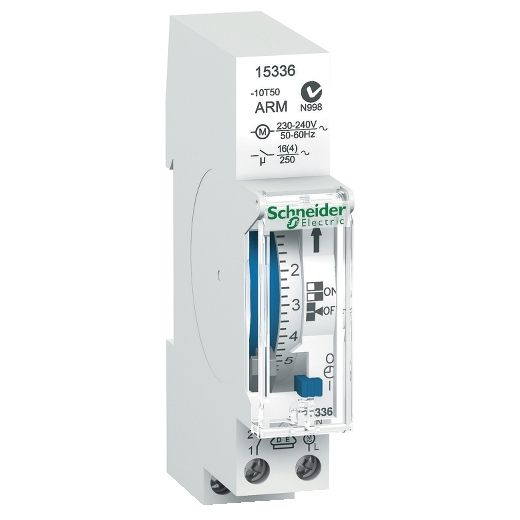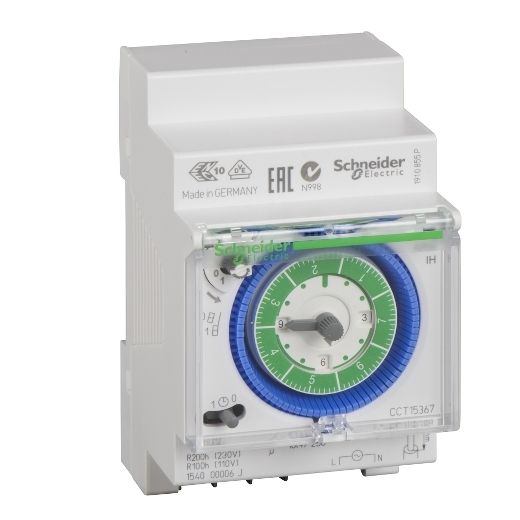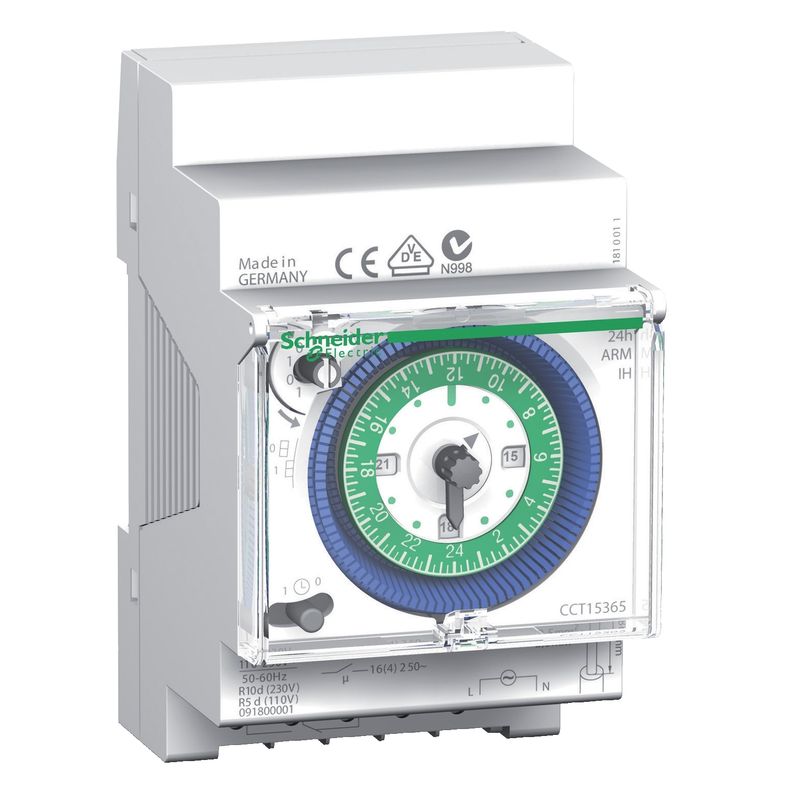Mechanical Time Switch
A mechanical time switch is a device that uses a mechanical clock mechanism to control the switching on and off of electrical circuits based on a pre-set schedule. Here’s a detailed look at its features, benefits, applications, and how it works:
Features
- Clock Mechanism: Utilizes gears, springs, and a clock face or dial to keep time.
- Manual Setting: Often includes pins, tabs, or segments on a rotating dial that can be manually adjusted to set the on/off times.
- Power Source: Operates either by being plugged into an electrical outlet or through a direct connection to a power circuit.
- Durability: Typically robust and designed to last, with fewer electronic components that can fail.
- Override Switch: Many models include a manual override switch to bypass the timer if needed.
Benefits
- Simplicity: Easy to set up and use without requiring any programming knowledge.
- Reliability: Mechanical components are generally durable and less susceptible to electronic failures.
- No Battery Needed: Maintains schedule without needing a battery backup (though some models may include a small battery to keep time during power outages).
- Cost-Effective: Often more affordable compared to digital timers.
Common Applications
- Lighting Control: Used to automate the switching of indoor or outdoor lights, such as garden lighting, security lights, or holiday decorations.
- Heating Systems: Controls water heaters, space heaters, or other heating appliances to operate at specific times.
- Pumps and Motors: Used in applications like pool pumps, irrigation systems, and industrial machinery.
- Household Appliances: Automates the operation of appliances such as coffee makers, fans, or air conditioners to improve convenience and energy efficiency.
How It Works
- Setting the Timer: The user adjusts the mechanical dial by placing pins or tabs at the desired on and off times. Each pin or tab corresponds to a specific time interval (e.g., 15 minutes, 30 minutes, or 1 hour).
- Rotation: The dial rotates continuously, driven by the clock mechanism, typically powered by the mains electricity.
- Activation: As the dial rotates, it pushes the pins or tabs to make or break the electrical contact, thus turning the connected device on or off at the set times.
- Manual Override: Many mechanical time switches include a manual override switch that allows users to turn the connected device on or off outside of the scheduled times without altering the timer settings.
Example of Use
Imagine you want to automate the outdoor garden lights to turn on at 6:00 PM and off at 11:00 PM every day:
- Set the pins or tabs on the mechanical dial at the 6:00 PM and 11:00 PM positions.
- Plug the time switch into an outdoor electrical outlet.
- Connect the garden lights to the time switch.
- The dial rotates throughout the day, and at 6:00 PM, it pushes a pin that closes the circuit, turning on the lights. At 11:00 PM, another pin opens the circuit, turning off the lights.
Summary
Mechanical time switches are a reliable, simple, and cost-effective solution for automating the control of electrical devices based on a set schedule. Their ease of use and durability make them suitable for a wide range of applications, from home lighting and appliances to industrial machinery.




